11 JANUARY 2010
YOUR WORDS
Readers are invited to add their comments to any story. Click on the article to see and add.
BTN DISTRIBUTION
BTN also goes out by email every Sunday night at midnight (UK time). To view this edition click here.
- ON THE SOAPBOX: Colin Matthews of BAA
- Air Comet fails
- Arch Hotel London
- Boeing takes off
- British Airways and Unite
- Budget hotel expansion
- Chicago Crown Plaza
- Heathrow pilot was drunk
- High speed train
- Iberia expands to South America
- Irish plans
- London City airport roadworks
- Majorca from the east end
- Melbourne and Qantas
- Monarch grows
- Mumbai gains airport hotel
- Northwest disappears
- Ocean Sky expands
- Office of Fair Trading and Ryanair
- Oman Air and 2009
- Qatar European expansion
- Ryanair and Boeing
- South East Asia alliance
- US airline into administration
- Virgin Atlantic gains a "network guardian"
- Winnipeg and London
- ON TOUR: Heathrow Terminal 6 or the third runway debate
- CHRISTMAS QUIZ: The results
- HAPPY TALK: Snow jokes
The Business Travel News
PO Box 758
Edgware HA8 4QF
United Kingdom
info@btnews.co.uk
© 2022 Business Travel News Ltd.
Arch Hotel London
 LONDON has a new luxury hotel near one of its most famous landmarks. The Arch London, is a £25m conversion of six Georgian properties and two mews homes in Great Cumberland Place, virtually opposite Marble Arch, into a stunning boutique townhouse hotel with 82 sumptuous bedrooms and suites, a restaurant and bar, lounge, gym and a meeting room. The whole enterprise has been put together by award-winning hotel architects RDD plc, the hotel combining contemporary design influences with the architectural heritage of the listed townhouses. The hotel has nine suites, each one named after one of London’s old telephone exchanges. The ABBey 222 and SULlivan 785 have small sunken courtyards leading off the guest bedrooms. Each courtyard has timber decking and wall heaters to ensure these areas can be enjoyed even on the chilliest of starlit nights. www.thearchlondon.com www.rddplc.co.uk
LONDON has a new luxury hotel near one of its most famous landmarks. The Arch London, is a £25m conversion of six Georgian properties and two mews homes in Great Cumberland Place, virtually opposite Marble Arch, into a stunning boutique townhouse hotel with 82 sumptuous bedrooms and suites, a restaurant and bar, lounge, gym and a meeting room. The whole enterprise has been put together by award-winning hotel architects RDD plc, the hotel combining contemporary design influences with the architectural heritage of the listed townhouses. The hotel has nine suites, each one named after one of London’s old telephone exchanges. The ABBey 222 and SULlivan 785 have small sunken courtyards leading off the guest bedrooms. Each courtyard has timber decking and wall heaters to ensure these areas can be enjoyed even on the chilliest of starlit nights. www.thearchlondon.com www.rddplc.co.uk
Budget hotel expansion
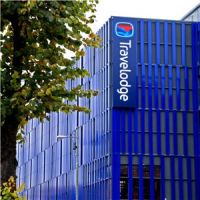 TRAVELODGE, the budget hotel chain owned by Dubai International Capital, has announced that it will open 26 new hotels in 2010 adding 2,000 rooms to the portfolio. The programme represents an investment of £115m and includes new properties in Aberdeen, Chichester, Edinburgh and London. Travelodge says that the recession been to its advantage with a desire by businesses to reduce travel expenditure. The new 2010 hotels will take Travelodge to over 400 UK properties representing over 30,000 rooms of accommodation. It expects to be the biggest hotel brand in the capital by the 2012 Olympics. www.travelodge.co.uk
TRAVELODGE, the budget hotel chain owned by Dubai International Capital, has announced that it will open 26 new hotels in 2010 adding 2,000 rooms to the portfolio. The programme represents an investment of £115m and includes new properties in Aberdeen, Chichester, Edinburgh and London. Travelodge says that the recession been to its advantage with a desire by businesses to reduce travel expenditure. The new 2010 hotels will take Travelodge to over 400 UK properties representing over 30,000 rooms of accommodation. It expects to be the biggest hotel brand in the capital by the 2012 Olympics. www.travelodge.co.uk
High speed train
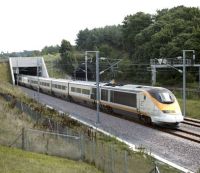 HIGH SPEED TWO, the company set up to advise the Government on the development of high-speed rail services between London and Scotland, delivered its report during the holiday break, supported by Transport Secretary Lord Adonis. It presents a detailed route plan for the first stage of a north-south high-speed line, from London to the West Midlands, as well as options for extending high-speed services, and high-speed lines, to destinations further north, including the North West, the East Midlands, Yorkshire, the North East and Scotland. If the Government decides to pursue proposals for high-speed rail, it will publish a white paper by the end of March. It will set out detailed plans for new high-speed rail lines and services, including route proposals, timescales and associated financial, economic and environmental assessments. This would be followed by a full public consultation starting in the Autumn of 2010, giving all interested parties an opportunity to comment before the proposals are finalised. Lord Adonis is hoping for all-party support. www.hs2.org.uk
HIGH SPEED TWO, the company set up to advise the Government on the development of high-speed rail services between London and Scotland, delivered its report during the holiday break, supported by Transport Secretary Lord Adonis. It presents a detailed route plan for the first stage of a north-south high-speed line, from London to the West Midlands, as well as options for extending high-speed services, and high-speed lines, to destinations further north, including the North West, the East Midlands, Yorkshire, the North East and Scotland. If the Government decides to pursue proposals for high-speed rail, it will publish a white paper by the end of March. It will set out detailed plans for new high-speed rail lines and services, including route proposals, timescales and associated financial, economic and environmental assessments. This would be followed by a full public consultation starting in the Autumn of 2010, giving all interested parties an opportunity to comment before the proposals are finalised. Lord Adonis is hoping for all-party support. www.hs2.org.uk
London City airport roadworks
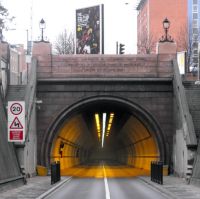 LONDON CITY AIRPORT users should note that the access to and from the airport from south London via the Rotherhithe Tunnel will be subject to disruption over the next three weeks. The tunnel will be closed from 22:00 and 05:00 until Friday morning this week and Sunday night until Thursday night, the same hours, for the following two weeks. This should not affect passengers with the last scheduled flight arrival due before 20:00. The work is taking place to allow engineers to install new pedestrian signage, power cables and additional pollution monitoring equipment in the tunnel. www.rotherhithetunnel.com
LONDON CITY AIRPORT users should note that the access to and from the airport from south London via the Rotherhithe Tunnel will be subject to disruption over the next three weeks. The tunnel will be closed from 22:00 and 05:00 until Friday morning this week and Sunday night until Thursday night, the same hours, for the following two weeks. This should not affect passengers with the last scheduled flight arrival due before 20:00. The work is taking place to allow engineers to install new pedestrian signage, power cables and additional pollution monitoring equipment in the tunnel. www.rotherhithetunnel.com
Monarch grows
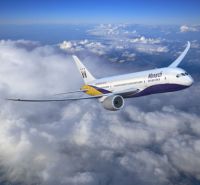 MONARCH, the Swiss-owned and Luton-based airline, has won the race to launch winter schedules for 2010/2011. New for the season is a weekly service from Luton to Gran Canaria and increased frequency to Tenerife (eight flights per week). From Birmingham, Alicante goes up to five flights per week, Gran Canaria is doubled to twice weekly and Lanzarote becomes four flights per week. The carrier serves on a year round basis Cyprus, Gibraltar, Portugal and Spain, and also operates from Gatwick and Manchester airports. www.monarch.co.uk
MONARCH, the Swiss-owned and Luton-based airline, has won the race to launch winter schedules for 2010/2011. New for the season is a weekly service from Luton to Gran Canaria and increased frequency to Tenerife (eight flights per week). From Birmingham, Alicante goes up to five flights per week, Gran Canaria is doubled to twice weekly and Lanzarote becomes four flights per week. The carrier serves on a year round basis Cyprus, Gibraltar, Portugal and Spain, and also operates from Gatwick and Manchester airports. www.monarch.co.uk
Ocean Sky expands
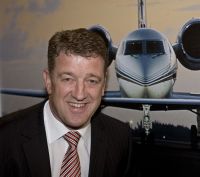 OCEAN SKY, the executive aviation specialist, has announced significant expansion plans under new Chief Executive Officer, Stephen Grimes. The plan is to expand to 12 fixed base operations (FBO) in the next year or so, mainly on the continent. Currently Ocean Sky has jet centres at Luton, Manchester and Prestwick airports. Mr Grimes originally joined Ocean Sky in September 2008 from Harrods Aviation where he was Chief Executive for ten years. A management reshuffle includes the appointment of Andrew Hughes, formerly with International Jetclub, who has joined as Managing Director of the Ocean Sky Aircraft Management division. Natalie Raper, previously Director of Marketing for Ocean Sky Jet Centre, and prior to that Business Development Director at Luton Airport, becomes Director of Marketing for the Ocean Sky. www.oceansky.com
OCEAN SKY, the executive aviation specialist, has announced significant expansion plans under new Chief Executive Officer, Stephen Grimes. The plan is to expand to 12 fixed base operations (FBO) in the next year or so, mainly on the continent. Currently Ocean Sky has jet centres at Luton, Manchester and Prestwick airports. Mr Grimes originally joined Ocean Sky in September 2008 from Harrods Aviation where he was Chief Executive for ten years. A management reshuffle includes the appointment of Andrew Hughes, formerly with International Jetclub, who has joined as Managing Director of the Ocean Sky Aircraft Management division. Natalie Raper, previously Director of Marketing for Ocean Sky Jet Centre, and prior to that Business Development Director at Luton Airport, becomes Director of Marketing for the Ocean Sky. www.oceansky.com
Qatar European expansion
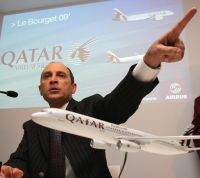 QATAR AIRWAYS is to serve Copenhagen and Barcelona from the start of the summer season 30 March. With the Danish capital it will four flights a week considerably increasing its Scandinavian presence, the established route to Stockholm expanding to a daily service. Barcelona will become Qatar Airways second city served in Spain, after Madrid, with daily flights. News of the routes announcement comes just days after the airline unveiled plans to launch flights to Bengaluru, Bangalore (southern India), the Turkish capital Ankara and Japan's capital city of Tokyo over an eight-week period starting in February 2010. The airline also plans to launch flights to Sydney, its second Australian destination, during 2010. www.qatarairways.com
QATAR AIRWAYS is to serve Copenhagen and Barcelona from the start of the summer season 30 March. With the Danish capital it will four flights a week considerably increasing its Scandinavian presence, the established route to Stockholm expanding to a daily service. Barcelona will become Qatar Airways second city served in Spain, after Madrid, with daily flights. News of the routes announcement comes just days after the airline unveiled plans to launch flights to Bengaluru, Bangalore (southern India), the Turkish capital Ankara and Japan's capital city of Tokyo over an eight-week period starting in February 2010. The airline also plans to launch flights to Sydney, its second Australian destination, during 2010. www.qatarairways.com
US airline into administration
 MESA AIR GROUP, a major regional US airline based in Phoenix Arizona, has filed for Chapter 11 bankruptcy protection. It said in a statement that it "will continue to operate as normal, without interruption" during the restructuring. "After careful consideration, the company determined that a Chapter 11 filing provides the most effective and efficient means to restructure with minimal impact on the business and our customers," Chairman and CEO Jonathan Ornstein said. "This process will allow us to eliminate excess aircraft to better match our needs and give us the flexibility to align our business to the changing regional airline marketplace." It announced neither job cuts nor a timeline for emerging from bankruptcy. Mesa has in the past worked closely with Delta, US Airways and United Airlines all of whom have cut back with franchised operations. www.mesa-air.com
MESA AIR GROUP, a major regional US airline based in Phoenix Arizona, has filed for Chapter 11 bankruptcy protection. It said in a statement that it "will continue to operate as normal, without interruption" during the restructuring. "After careful consideration, the company determined that a Chapter 11 filing provides the most effective and efficient means to restructure with minimal impact on the business and our customers," Chairman and CEO Jonathan Ornstein said. "This process will allow us to eliminate excess aircraft to better match our needs and give us the flexibility to align our business to the changing regional airline marketplace." It announced neither job cuts nor a timeline for emerging from bankruptcy. Mesa has in the past worked closely with Delta, US Airways and United Airlines all of whom have cut back with franchised operations. www.mesa-air.com
ON TOUR: Heathrow Terminal 6 or the third runway debate
Just before the holiday break there were two significant announcements regarding what many agree is the major transport project of the next decade Heathrow’s Terminal 6. Firstly Parliament’s Transport Select Committee endorsed the government’s support for the third runway, and secondly, to the surprise of many, the Committee on Climate Change also went in favour of expanding air travel.
It is worth noting at this point that Heathrow is not standing still with T2 now finally closed and work well on the way with its replacement. The Heathrow “Airtrack” project, essentially a link between T5 and the Waterloo, Reading and Guildford lines at Staines, is now defined and Lord Adonis, Transport Minister, will probably call for a public enquiry, expected to take place in the Spring.
We must mention at this point the minister’s ambitious plans for the railways but in truth it is a decade away from any form of application by which time, sadly, Andrew Adonis will just be a name in a reference book.
A legal challenge
Next up is a legal challenge in the High Court, 23 February, but possibly more damaging is the official Conservative policy of opposing any expansion, with no firm alternative proposed, strange views from the party of free enterprise.
The economic case for an additional runway is persuasive. The Government calculates that the proposal for a third runway at Heathrow would generate over £4.8bn in direct net economic benefits – the 2003 ‘Future of Air Transport’ White Paper, reinforced the view that Heathrow is much more than “just an airport” for London, recognising that it delivers significant direct/indirect benefits to local and national economies and, at the same time, the Government recognised that “these strong economic arguments must be weighed against serious environmental disadvantages”. The White Paper set out stringent air quality targets which have to be met before the Government can support any proposals for a third runway.
Heathrow was conceived during the Second World War, when it became apparent that the existing main London commercial airport, Croydon, would not suffice, for the larger aircraft already in service and on the drawing board. A site west of London, known as Heath Row, was chosen for the new development. The original planners must in retrospect be considered brilliant, as the resulting international airport, now the world’s busiest, has generated a massive effect, responsible for a series of whole new communities; the results seen as far as Swindon, where typically Honda chose to build their new car plant. The original planners also foresaw the future and amazingly, the new proposed site for Terminal 6 is in exactly the same position as suggested for a series of commuter runways in the original master plan. Bath Road in its present form, did not exist, London’s main artery being the Great Southwest Road and the London Road down towards Feltham. The area south of Hayes, was mainly rural and farmland.
The world’s most important international airport
Heathrow is still Europe’s and the world’s dominant international airport hub, although with the continuing introduction of very long-range aircraft, this position is likely to be eroded in terms of it being a technical halt between India, Asia and North America. There are still more flights per week to New York than the combined Amsterdam, Charles de Gaulle and Frankfurt operations. For every major international destination, it leads its European rivals with ease. However, in terms of transfer passengers, Frankfurt has been in front for some years and continues to do so. The British Airways tie-up with Iberia would probably reduce flights to the potentially massive South American market, which is a pity, but on the plus side the coming of the Airbus A380 in numbers will push up the average passengers per flight from the current 160 per aircraft. Hopefully Air France will revert to Airbus A320 series aircraft on all routes from the hub, it presently substituting small ATR turboprops on some routes.
The BAA view is whilst the airport will grow to 85m passengers plus by 2015, the transfer number will remain fairly static at around 22/23m.
The argument that an expansion of regional airports is the way ahead is a poor one. BA has tried many times to expand North Atlantic services from both Glasgow and Manchester, without success. Globally, two international airports for a major city does not work. Charles de Gaulle outperforms Orly, JFK as a worldwide hub is far more dominant that Newark, and in Japan the airlines want to retreat from Narita to Haneda.
The T6 project is designed around the concept of a 2,200 metre runway, OK for narrow-bodied jets and turboprops, but far too short for heavy wide-bodied aircraft. It would be parallel to the existing 09/27 (L-R) and be sited just to the south of the existing Holiday Inn. The proposed terminal design includes a railway station and a transfer system to the central area. Road connections to the M4 are planned to be particularly easy. Most of the parking, hotel, office and industrial area will remain but the scheme does include the loss of 700 properties including the entire village of Sipson and also part of Harmondsworth.
Land purchase schemes
BAA has voluntarily published two land purchase schemes enabling the airport company to purchase both land within the expanded boundary of the proposed three-runway airport, and just outside, blighted areas, once it goes for planning permission. Home and commercial property owners, as noted on the schemes, can register with BAA, who will issue bonds guaranteeing values based on notional June 2002 figures index linked to values generated elsewhere. This scheme, which BAA very clearly notes was not required of them in law, hopefully will take much of the worry from residents rightly concerned for their future. There is also a home relocation assistance format for people living within a certain noise band of the airport and a community buildings noise insulation offering for what in effect is a larger area.
BAA recognises that the consequences of the decision will be difficult for some and has reiterated its desire to work closely with the local community to try and ease the emotional stress the expansion will bring to some residents. But ultimately, the Government has made it clear that it believes the national benefits of expanding Heathrow outweigh the heavy cost to the village of Sipson.
The Department for Transport summed it all up very well with its policy statement on the third runway.
“As the economic downturn demonstrates, we live in a global age. It is critical that Government makes the tough choices necessary to deliver long term prosperity to the United Kingdom.”
MALCOLM GINSBERG January 2010
http://www.airtrack.org
http://www.heathrowairport.com/thirdrunway
http://www.dft.gov.uk/consultations/archive/2008/heathrowconsultation
ON THE SOAPBOX: Colin Matthews of BAA
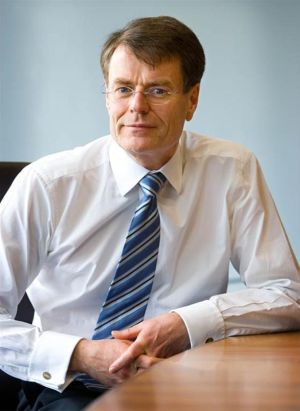 Colin Matthews, 51, joined BAA Ltd just under a year ago from water company Severn Trent where he was in a similar post. Educated at Cambridge and Paris business school, Mr Matthews has held various industrial positions including a spell at British Airways, where he was first Director of Engineering then Director of Technical Operations, responsible for all aircraft maintenance, IT and procurement.
Colin Matthews, 51, joined BAA Ltd just under a year ago from water company Severn Trent where he was in a similar post. Educated at Cambridge and Paris business school, Mr Matthews has held various industrial positions including a spell at British Airways, where he was first Director of Engineering then Director of Technical Operations, responsible for all aircraft maintenance, IT and procurement.
2009 was a year of dramatic change for many people and businesses. That included us at BAA as we said farewell to friends and colleagues at Gatwick, and wished them well as part of a new company.
The sale of Gatwick is a defining moment for people at both companies. For our company I hope it comes to represent a significant turning point.
The transaction was a catalyst for a series of further positive changes at BAA. Since October, we have repaid more than £1bn of debt and refinanced a similar sum. Our shareholders injected £500m of new capital to the London airports group, reflecting a sustained commitment to our business, and our two credit rating agencies affirmed our investment-grade ratings. So we look forward to 2010 with our funding in good health.
The sale of Gatwick has changed the face of BAA for ever, and our move to sell it before any instruction from regulators to do so signalled that however much we disagreed with the Competition Commission’s analysis of the UK airports market, we knew we had to change. Our airline customers, our passengers, the public at large and those powerful influences in the press and politics told us as much in clear terms.
Our change does not stop with the sale of an airport. We have brought a sharper focus on improving our airports for passengers both through short term operational improvements and massive long term investment.
Our ability to do the former directly impacts the credibility of our arguments on the latter. But so too must we respond well to external events.
On Christmas Day, a young Nigerian man attempted to bring down an airliner over Detroit. Fortunately he failed, but his actions showed how our security measures need to evolve to meet an unpredictable and changing threat.
Aviation has reacted responsibly and Transport Secretary Lord Adonis has engaged with airports to take quick and effective steps to provide visible and effective enhancements to security. The measures reassure and protect our passengers and staff alike.
At the end of this month we will introduce full body-scanners at Heathrow, adding an additional layer of security and a powerful deterrent, and airport security can be combined with other elements to constantly adapt to the mutating threat.
At Heathrow, we are training a team of people to identify and respond to unusual passenger behaviour. Having spent time observing this new programme, referred to in a statement by the Home Secretary last week, I am confident that it is a valuable weapon in the UK’s collective security armoury.
However, the industry and security services, police and Government must also work better together to join up the intelligence ‘dots’ and use the wider picture to positive effect.
Looking further to the long-term, I am concerned that Heathrow’s position as a hub – the only one in the UK – is being eroded.
The virtuous cycle of transfer business through Heathrow creates a powerful network of direct destinations from which London and UK would otherwise not benefit.
However, we are falling behind our European competitors in terms of the number of destinations served and our key network carriers are unable to provide the flights they want to operate because of the lack of slots and the uneconomic way those slots are allocated.
That, along with the need to build more resilience into the runway utilisation in the event of weather and other disruption, are the most obvious arguments for the third runway at Heathrow. Regulation needs to draw a distinction between Heathrow, the hub, and the point to point airports around the country that are no less important but which serve a different purpose.
My hope for 2010 is that we can promote a rational discussion about Heathrow’s future. We should not continue to muddle through, leaving it to a future generation to pick up the pieces and put them back together in the right way.
Heathrow is resilient in many respects. During the tumultuous months of global recession, we outperformed all of our European competitors and Heathrow’s traffic continues to grow. Last week, our airfield and operational teams worked tirelessly to ensure that Heathrow remained open throughout the most severe cold snap for many years.
But over the coming decade, that strength will be tested by the forces of global competition. If there was ever a time for a measured debate on the future of one of the UK’s most prized economic assets, it is now.
In December, the Committee on Climate Change started that process by suggesting that aviation can grow within ambitious carbon reduction targets.
The Committee’s report took many people outside this business by surprise, but for us, this authoritative report reinforced a belief in the aviation industry’s ability to develop the new technologies and fuels that will reduce the overall impact of flying on the climate, and protect the UK’s position as a global economic powerhouse.
These are just some of the challenges to which I and colleagues look forward this year. In your businesses, I am sure the picture is no less busy.
On behalf of all at BAA, I wish you a happy and successful new year.
COLIN MATTHEWS
Boeing takes off
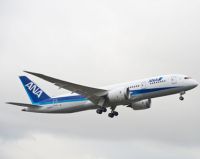 BOEING flew the second of its 787 Dreamliners just before Christmas to little fanfare, but featuring the livery of launch customer ANA (All Nippon Airways) of Japan with the first aircraft due for delivery by the end of the year. It has confirmed a current order book of 851 for the plane, easily a record for a launch commercial aircraft model. Boeing also has a backlog of 2,076 New Generation 737s, 281 for the 777, 108 Boeing 747s on order and just 59 767s. Boeing Commercial Aircraft order book stood at a very healthy 3,375 units at the end of the year. www.boeing.com/commercial
BOEING flew the second of its 787 Dreamliners just before Christmas to little fanfare, but featuring the livery of launch customer ANA (All Nippon Airways) of Japan with the first aircraft due for delivery by the end of the year. It has confirmed a current order book of 851 for the plane, easily a record for a launch commercial aircraft model. Boeing also has a backlog of 2,076 New Generation 737s, 281 for the 777, 108 Boeing 747s on order and just 59 767s. Boeing Commercial Aircraft order book stood at a very healthy 3,375 units at the end of the year. www.boeing.com/commercial
Chicago Crown Plaza
 CHICAGO has a new Crown Plaza just steps from Michigan Avenue's "Magnificent Mile" and close by the Navy Pier. A conversion of the Avenue Hotel Chicago, the 40-storey 350-room hotel completed a multi-million dollar renovation in summer 2008. The hotel has more than 18,000 sq ft of flexible upscale meeting space featuring natural light from expansive windows overlooking the city. Each guestroom is complete with a flat-screen TV, iHome docking station, mini bar, rain showerhead, and granite countertops along with expansive views of Lake Michigan and the downtown skyline. Guests have access to a variety of amenities including complimentary wi-fi in the guestrooms and public spaces, rooftop pool, fitness suite, business centre, in-room dining and spa services. www.chicagocrownplaza.com
CHICAGO has a new Crown Plaza just steps from Michigan Avenue's "Magnificent Mile" and close by the Navy Pier. A conversion of the Avenue Hotel Chicago, the 40-storey 350-room hotel completed a multi-million dollar renovation in summer 2008. The hotel has more than 18,000 sq ft of flexible upscale meeting space featuring natural light from expansive windows overlooking the city. Each guestroom is complete with a flat-screen TV, iHome docking station, mini bar, rain showerhead, and granite countertops along with expansive views of Lake Michigan and the downtown skyline. Guests have access to a variety of amenities including complimentary wi-fi in the guestrooms and public spaces, rooftop pool, fitness suite, business centre, in-room dining and spa services. www.chicagocrownplaza.com
Iberia expands to South America
 IBERIA is to significantly increase capacity on a number of South American routes. Flights from Madrid to Lima (Peru) go up by four to 11 per week; Buenos Aires (Argentina) flights raised by three weekly to 17, and in cooperation with LAN three new flights per week to Quito (Ecuador). Bogota (Columbia) will gain in June three new weekly flights, with another five in October, for a weekly total of 12. www.iberia.com
IBERIA is to significantly increase capacity on a number of South American routes. Flights from Madrid to Lima (Peru) go up by four to 11 per week; Buenos Aires (Argentina) flights raised by three weekly to 17, and in cooperation with LAN three new flights per week to Quito (Ecuador). Bogota (Columbia) will gain in June three new weekly flights, with another five in October, for a weekly total of 12. www.iberia.com
Majorca from the east end
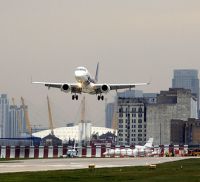 MAJORCA is to gain a new UK route for the summer season from the most unlikely of airports. After dropping Barcelona, British Airways is to introduce a London City route to Palma in May operating an Embraer 190. It is probably the first pure leisure service from the airport and will initially operate on a three times a week basis, Fridays, Sunday and Mondays. Ideal for city high flyers to take off for the weekend. www.ba.com
MAJORCA is to gain a new UK route for the summer season from the most unlikely of airports. After dropping Barcelona, British Airways is to introduce a London City route to Palma in May operating an Embraer 190. It is probably the first pure leisure service from the airport and will initially operate on a three times a week basis, Fridays, Sunday and Mondays. Ideal for city high flyers to take off for the weekend. www.ba.com
Mumbai gains airport hotel
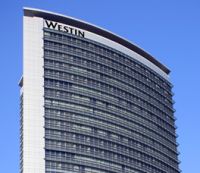 MUMBAI has a new five-star hotel close to the international airport. The 269-room Westin Mumbai Garden City is located on the Western Express Highway, which makes it also convenient for Film City. The hotel features a fitness centre and an outdoor pool. It has many distinctive culinary experiences, including an all-day-dining, a lounge bar, a poolside bar and restaurant, and both Indian and Italian speciality restaurants. With more than 9,688 sq ft of meeting and function space and nine meeting rooms, the hotel provides for flexibility and choice with state-of-the-art facilities. www.mumbai.com
MUMBAI has a new five-star hotel close to the international airport. The 269-room Westin Mumbai Garden City is located on the Western Express Highway, which makes it also convenient for Film City. The hotel features a fitness centre and an outdoor pool. It has many distinctive culinary experiences, including an all-day-dining, a lounge bar, a poolside bar and restaurant, and both Indian and Italian speciality restaurants. With more than 9,688 sq ft of meeting and function space and nine meeting rooms, the hotel provides for flexibility and choice with state-of-the-art facilities. www.mumbai.com
Office of Fair Trading and Ryanair
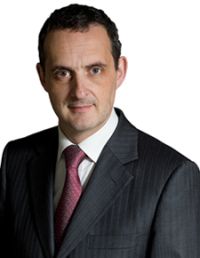 OFFICE OF FAIR TRADING (OFT) Chief Executive John Fingleton last week, using tactics exploited by the airline, chose The Independent for an attack on Ryanair rather than issue an official press release . By this means he could be more outspoken than an OFT statement would allow stating that the airline had been "puerile and childish" over its card payment policy, passengers only able to escape very expensive credit card costs by using an obscure prepaid facility. Ryanair, as is its want, attacked Mr Fingleton on a personal basis, its Head of Communications Stephen McNamara quoted as saying that the head of OFT “was overpaid and not an everyday Joe Blogg”. www.the-independent.com
OFFICE OF FAIR TRADING (OFT) Chief Executive John Fingleton last week, using tactics exploited by the airline, chose The Independent for an attack on Ryanair rather than issue an official press release . By this means he could be more outspoken than an OFT statement would allow stating that the airline had been "puerile and childish" over its card payment policy, passengers only able to escape very expensive credit card costs by using an obscure prepaid facility. Ryanair, as is its want, attacked Mr Fingleton on a personal basis, its Head of Communications Stephen McNamara quoted as saying that the head of OFT “was overpaid and not an everyday Joe Blogg”. www.the-independent.com
Ryanair and Boeing
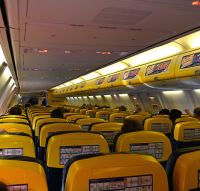 RYANAIR will shortly outline plans to reduce growth and capital expenditures "significantly" in the first quarter of the new year after negotiations with Boeing for an order of up to 200 new 737-800s formally broke down, although it still plans to take 112 previously ordered -800s (including 48 this year) to sustain growth over the medium term. At an investors' briefing CEO Michael O'Leary said that he planned to distribute to shareholders in March 2013, that the €2.5bn cash mountain will grow and confirmed that a third bid for Aer Lingus was unlikely unless the Irish government disposed of its 25% holding. He has not closed the door completely regarding Boeing and may yet order aircraft. www.ryanair.com
RYANAIR will shortly outline plans to reduce growth and capital expenditures "significantly" in the first quarter of the new year after negotiations with Boeing for an order of up to 200 new 737-800s formally broke down, although it still plans to take 112 previously ordered -800s (including 48 this year) to sustain growth over the medium term. At an investors' briefing CEO Michael O'Leary said that he planned to distribute to shareholders in March 2013, that the €2.5bn cash mountain will grow and confirmed that a third bid for Aer Lingus was unlikely unless the Irish government disposed of its 25% holding. He has not closed the door completely regarding Boeing and may yet order aircraft. www.ryanair.com
Virgin Atlantic gains a "network guardian"
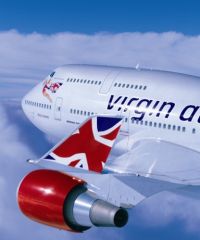 SITA, the airlines' IT supplier owned by its members, has been appointed by Virgin Atlantic to what it calls its “Network Guardian” with primary responsibility for all voice and data IT services. Virgin says it will result in a significant reduction in network communication costs. The five-year, multi-million dollar partnership covers in excess of 100 sites worldwide. Previously Virgin required approximately 40 suppliers. The service has commenced and full transition to SITA as the single supplier will be completed by summer 2010. SITA is also the owner of OnAir, a leading provider of in-flight connectivity, and CHAMP Cargosystems, the world's only IT company dedicated solely to air cargo. www.virgin-atlantic.com www.sita.aero
SITA, the airlines' IT supplier owned by its members, has been appointed by Virgin Atlantic to what it calls its “Network Guardian” with primary responsibility for all voice and data IT services. Virgin says it will result in a significant reduction in network communication costs. The five-year, multi-million dollar partnership covers in excess of 100 sites worldwide. Previously Virgin required approximately 40 suppliers. The service has commenced and full transition to SITA as the single supplier will be completed by summer 2010. SITA is also the owner of OnAir, a leading provider of in-flight connectivity, and CHAMP Cargosystems, the world's only IT company dedicated solely to air cargo. www.virgin-atlantic.com www.sita.aero
CHRISTMAS QUIZ: The results

Thank you everyone who entered the AERBT Christmas quiz. If you did not enter but enjoyed trying to name the aircraft that is all that matters. Our thanks once again to the Millennium Copthorne Mayfair, Dirty Dancing and Air Atlantique Classic Flight and Berlitz travel guides for their contributions.
The honour for the first crossing of America non-stop goes to Bob Fowler who in April 1913 flew across the Isthmus of Panama during the final phase of the canal construction in just 57 minutes. He had already become first to fly the US west to east in late 1911, beaten by Calbraith P. Rogers who in September of that year in a Wright biplane flew from New York to Los Angles in 49 days or 82 hours flying time. The non-stop honour goes to Lts. John A. Macready and Oakley G. Kelly who on 2 May 1923 in a single engine Fokker T-2 aeroplane flew from Roosevelt Field, Long Island, NY to San Diego, California, in just 26 hours 50 minutes. Today the 2,520 miles distance is a six-hour scheduled flight.
All the aircraft have been labelled. The prizewinners will be announced next week.
With our thanks to the Cowin Collection archives hughw.amas@btinternet.com
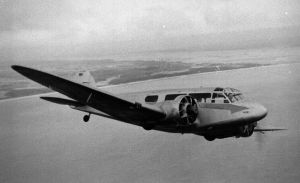
1 Airspeed Envoy first flight June 1936
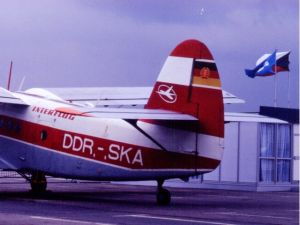
2 Antonov AN-2
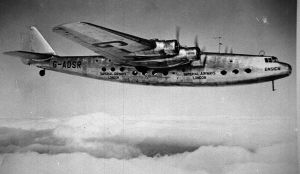
3 Armstrong Whitworth Ensign
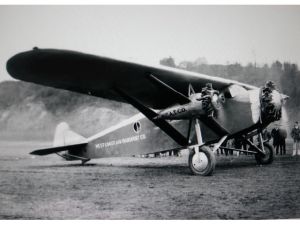
4 Bach 3-CR Air Yacht
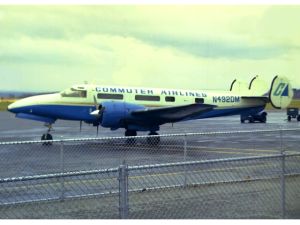
5 Beech Model 18
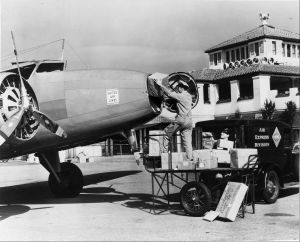
6 Boeing 247

7 Boeing 2707
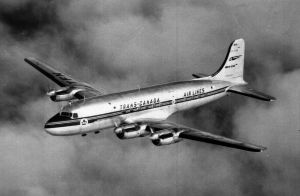
8 Canadair CL-4 North Star
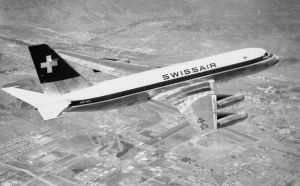
9 Convair 880
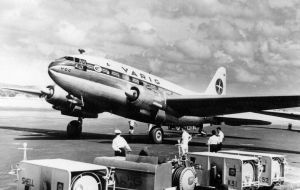
10 Curtis Wright C 46
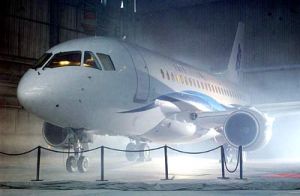
11 Dornier 728
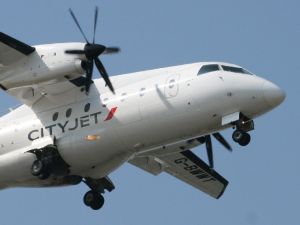
12 Dornier 328
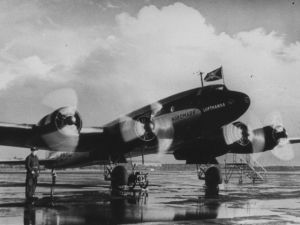
13 Focke Wulf 200 of Lufthansa

14 HS Trident 2 "FF"
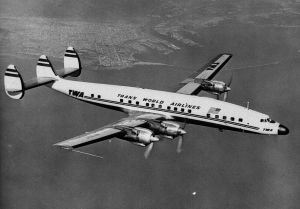
15 Lockheed Super Constellation
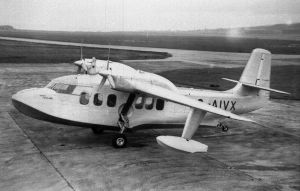
16 Short Sealand (see Belfast Transport Museum)
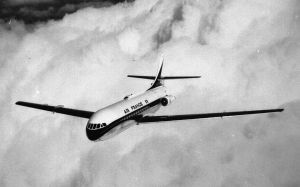
17 Sud Caravelle 1 (first flight 27 May 1955)
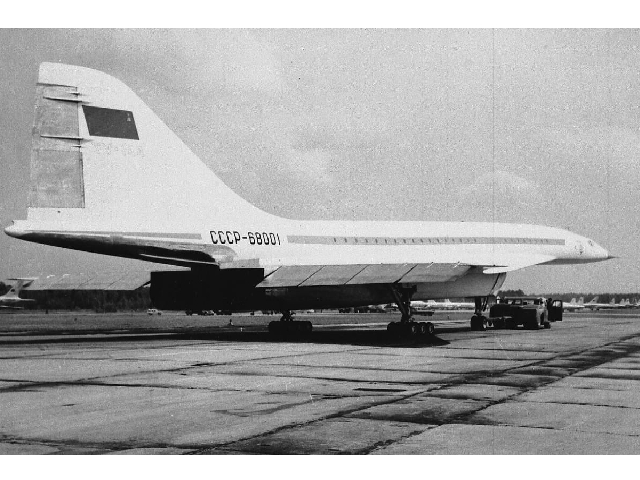
18 Tupovlev 144
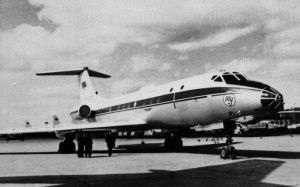
19 Tupovlev 134 (first flight December 1963)
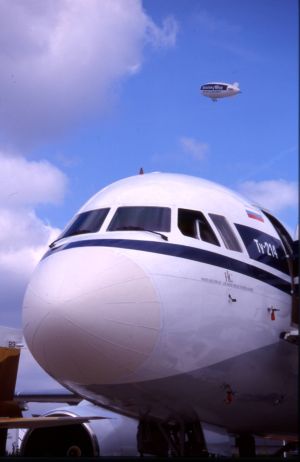
20 Tupovlev 214
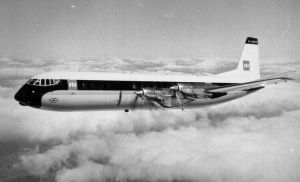
21 Vickers Vanguard (first flight 20 March 1959)
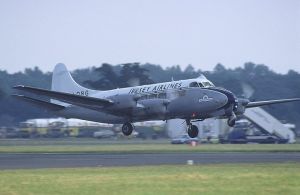
22 de Havilland Heron
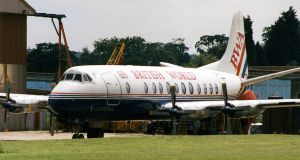
23 Vickers Viscount 800
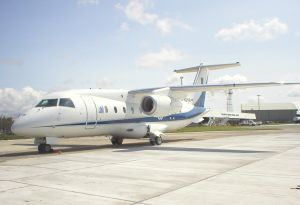
24 Dornier 328 JET
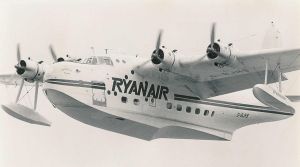
25 Shorts Sandringham (pre O'Leary photo)
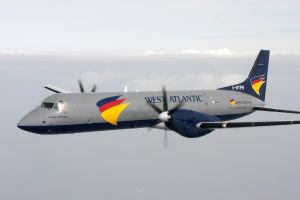
26 BAe ATP
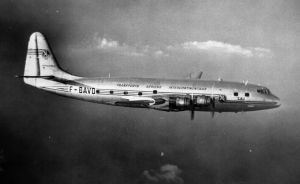
27 SNCASE SE 2010 Armagnac (1st flight 2 Apr 1949)
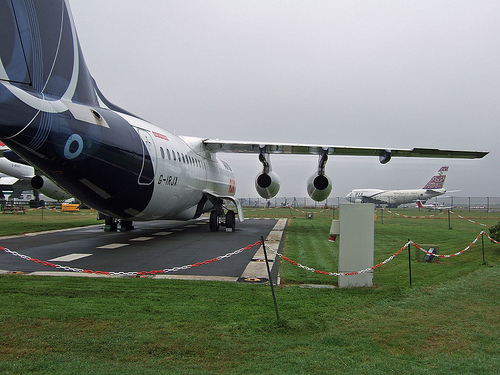
28 AVRO RJX

29 Boeing B1
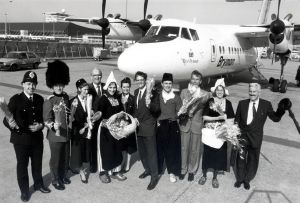
30 Brymon Airways DHC Dash 7
Air Comet fails
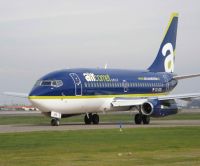 AIR COMET, essentially a Spanish charter operator, ceased operations at the end of December and its Air Operators Certificate (AOC) was withdrawn. Although full details have not been revealed it is understood that the airline owed nearly €18m aircraft lease payments and several million Euros in back pay to its 640 employees. The airline operated four Airbus A330. www.aircomet.com
AIR COMET, essentially a Spanish charter operator, ceased operations at the end of December and its Air Operators Certificate (AOC) was withdrawn. Although full details have not been revealed it is understood that the airline owed nearly €18m aircraft lease payments and several million Euros in back pay to its 640 employees. The airline operated four Airbus A330. www.aircomet.com
British Airways and Unite
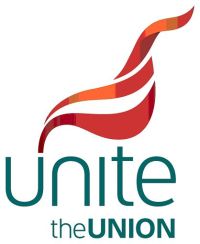 UNITE and British Airways are holding talks under the auspices of the TUC aimed at finding a negotiated settlement to their dispute over cabin crew terms and conditions. Representatives of both sides are trying to find a resolution of the quarrel which led to a decision by the cabin crew to take strike action, subsequently prohibited by the High Court, last month. In spite of the threat (and re-balloting of members later in the month) the union put out what it probably terms is a friendly statement quoting Joint General Secretaries Derek Simpson and Tony Woodley stating “We have said all along that this dispute could only be resolved through negotiation, rather than imposition or litigation, so we are delighted to be joining BA management in talks at the TUC.“ www.unitetheunion.com www.ba.com
UNITE and British Airways are holding talks under the auspices of the TUC aimed at finding a negotiated settlement to their dispute over cabin crew terms and conditions. Representatives of both sides are trying to find a resolution of the quarrel which led to a decision by the cabin crew to take strike action, subsequently prohibited by the High Court, last month. In spite of the threat (and re-balloting of members later in the month) the union put out what it probably terms is a friendly statement quoting Joint General Secretaries Derek Simpson and Tony Woodley stating “We have said all along that this dispute could only be resolved through negotiation, rather than imposition or litigation, so we are delighted to be joining BA management in talks at the TUC.“ www.unitetheunion.com www.ba.com
Heathrow pilot was drunk
 UNITED AIRLINES is both embarrassed and pleased that it was its staff who spotted a pilot who turned up at Heathrow to operate a flight to Chicago while three times over the alcohol limit. A British court has found Captain Erwin Washington, 51, of Lakewood, Colorado, guilty of attempting to take off when officially drunk. His lawyer said the pilot was "remorseful." Washington will be sentenced on 5 February and was released on unconditional bail. He has been suspended by the airline. www.united.com
UNITED AIRLINES is both embarrassed and pleased that it was its staff who spotted a pilot who turned up at Heathrow to operate a flight to Chicago while three times over the alcohol limit. A British court has found Captain Erwin Washington, 51, of Lakewood, Colorado, guilty of attempting to take off when officially drunk. His lawyer said the pilot was "remorseful." Washington will be sentenced on 5 February and was released on unconditional bail. He has been suspended by the airline. www.united.com
Irish plans
 AER LINGUS has confirmed that it is in discussion with the Irish regional operator Aer Arann regarding franchise arrangements on routes between Ireland and the UK. This could dovetail in very nicely for both carriers with passengers able to use alternative airports for their return journey. In another move the carrier has come to an arrangement with United Airlines for Aer Lingus aircraft and crews to operate a Madrid – Washington daily code share route with an Airbus A330 from the start of the summer season. Aer Lingus already flies to Madrid from Dublin on a daily basis. www.aerlingus.com
AER LINGUS has confirmed that it is in discussion with the Irish regional operator Aer Arann regarding franchise arrangements on routes between Ireland and the UK. This could dovetail in very nicely for both carriers with passengers able to use alternative airports for their return journey. In another move the carrier has come to an arrangement with United Airlines for Aer Lingus aircraft and crews to operate a Madrid – Washington daily code share route with an Airbus A330 from the start of the summer season. Aer Lingus already flies to Madrid from Dublin on a daily basis. www.aerlingus.com
Melbourne and Qantas
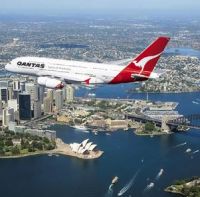 QANTAS (QF) has taken delivery of its fifth and sixth Airbus A380 and plans to commence services with the super Jumbo between London and Melbourne via Singapore on 22 January, just 12 months after the aircraft was introduced on the Heathrow – Sydney route. The aircraft have now flown over half a million passengers. Initially an A380 will operate one to two flights per week on the route (QF10 on Fridays and Saturdays and the return QF9 on Mondays and Sundays commencing 18 January), with regular twice-weekly flights to commence on 29 March. www.qantas.com
QANTAS (QF) has taken delivery of its fifth and sixth Airbus A380 and plans to commence services with the super Jumbo between London and Melbourne via Singapore on 22 January, just 12 months after the aircraft was introduced on the Heathrow – Sydney route. The aircraft have now flown over half a million passengers. Initially an A380 will operate one to two flights per week on the route (QF10 on Fridays and Saturdays and the return QF9 on Mondays and Sundays commencing 18 January), with regular twice-weekly flights to commence on 29 March. www.qantas.com
Northwest disappears
 NORTHWEST AIRLINES will disappear as an entity over the next three months. Whilst it was taken over by Delta in 2008 the name Northwest continued via its web site, boarding passes and some aircraft. The Detroit incident on Christmas Day shows an aircraft in Delta colours although officially it was still Northwest. Last week, however, the FAA gave its final approval that the two airlines can now complete their integration and operate under a single operating certificate. Founded in 1926 the airline has always traded under the same title although from the early sixties until 1989 it did use the title Northwest Orient. www.delta.com
NORTHWEST AIRLINES will disappear as an entity over the next three months. Whilst it was taken over by Delta in 2008 the name Northwest continued via its web site, boarding passes and some aircraft. The Detroit incident on Christmas Day shows an aircraft in Delta colours although officially it was still Northwest. Last week, however, the FAA gave its final approval that the two airlines can now complete their integration and operate under a single operating certificate. Founded in 1926 the airline has always traded under the same title although from the early sixties until 1989 it did use the title Northwest Orient. www.delta.com
Oman Air and 2009
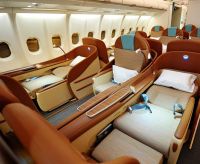 OMAN AIR has been the first airline to issue its 2009 figures, which no doubt will come in thick and fast over the next few weeks. The rapidly expanding Gulf state carrier reports a 17% rise in passenger figures last year to 2.3m. Oman Air Cargo too surged ahead posting an impressive result of 67% increase on revenue during the last year, as compared to turnout last year with 2,325,805 tons over the previous year figure of 1,984,853. Key to the expansion was the introduction of Airbus A330 aircraft with an enhanced cabin to the airline’s specification. The carrier introduced operations to Frankfurt, Munich and Paris, and also upgraded its three-class London operation to Heathrow. The airline has five Embraer 175s on order for regional flights. http://www.omanair.aero
OMAN AIR has been the first airline to issue its 2009 figures, which no doubt will come in thick and fast over the next few weeks. The rapidly expanding Gulf state carrier reports a 17% rise in passenger figures last year to 2.3m. Oman Air Cargo too surged ahead posting an impressive result of 67% increase on revenue during the last year, as compared to turnout last year with 2,325,805 tons over the previous year figure of 1,984,853. Key to the expansion was the introduction of Airbus A330 aircraft with an enhanced cabin to the airline’s specification. The carrier introduced operations to Frankfurt, Munich and Paris, and also upgraded its three-class London operation to Heathrow. The airline has five Embraer 175s on order for regional flights. http://www.omanair.aero
South East Asia alliance
 AIR ASIA & JETSTAR are to form an alliance, claimed to be the first organised by two low cost carriers anywhere in the world. Although established in 1993 Air Asia really dates from 2001 when it was taken over for a nominal sum by a group headed by former Virgin Atlantic executive Tony Fernandes. Jetstar is 100% owned by Qantas. Both airlines compete in a market that also includes Singapore Airlines subsidiary Tiger Airways. In a statement the two budget airlines said they would focus on a range of major cost reduction opportunities. Key to the agreement is a proposed joint specification for the next generation of narrow body aircraft but probably just as important is an anticipated arrangement to pool ground handling airport passenger services. www.airasia.com www.jetstar.com
AIR ASIA & JETSTAR are to form an alliance, claimed to be the first organised by two low cost carriers anywhere in the world. Although established in 1993 Air Asia really dates from 2001 when it was taken over for a nominal sum by a group headed by former Virgin Atlantic executive Tony Fernandes. Jetstar is 100% owned by Qantas. Both airlines compete in a market that also includes Singapore Airlines subsidiary Tiger Airways. In a statement the two budget airlines said they would focus on a range of major cost reduction opportunities. Key to the agreement is a proposed joint specification for the next generation of narrow body aircraft but probably just as important is an anticipated arrangement to pool ground handling airport passenger services. www.airasia.com www.jetstar.com
Winnipeg and London
 ICELAND EXPRESS, the budget airline, is to further enhance its planned connectively at Keflavik (Reykjavik) International Airport to North America from June onwards. Iceland initially announced a JFK New York service originating at Gatwick. It is now adding Winnipeg in Manitoba (Canada) to the hub at fares substantially less than various alternatives via Canadian gateways. Also launched in mid-summer are weekly flights between Gatwick and Akureyri (northern Iceland) and also Birmingham to Reykjavik. The airline currently flies to Reykjavik daily from Gatwick and twice weekly from Stansted. www.icelandexpress.com
ICELAND EXPRESS, the budget airline, is to further enhance its planned connectively at Keflavik (Reykjavik) International Airport to North America from June onwards. Iceland initially announced a JFK New York service originating at Gatwick. It is now adding Winnipeg in Manitoba (Canada) to the hub at fares substantially less than various alternatives via Canadian gateways. Also launched in mid-summer are weekly flights between Gatwick and Akureyri (northern Iceland) and also Birmingham to Reykjavik. The airline currently flies to Reykjavik daily from Gatwick and twice weekly from Stansted. www.icelandexpress.com
HAPPY TALK: Snow jokes
We could not resist it!
What happened when the snowgirl fell out with the snowboy?
She gave him the cold shoulder!
What do snowmen wear on their heads?
Ice caps!
What's an ig?
An eskimo's home without a loo!
Where do snowmen go to dance?
Snowballs!
What sort of ball doesn't bounce?
A snowball!
What do you get if cross a snowman and a shark?
Frost bite!
How do you call an Eskimo cow?
An Eskimoo!


